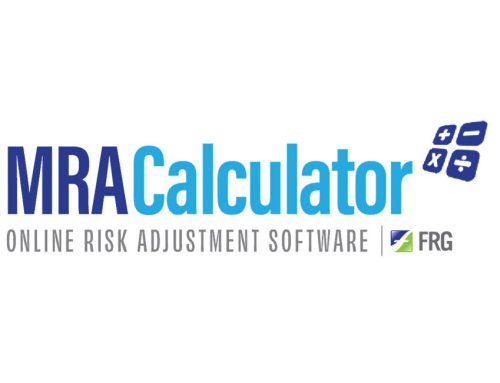As Medicare Advantage coverage has grown each year, now covering half of all Medicare patients (more than 30 million Americans), fraudulent risk adjustment practices have persisted. The Centers for Medicare & Medicaid Services (CMS) has made several efforts to course correct and avoid unnecessary overpayments.
In 2022, CMS issued the controversial Medicare Advantage Risk Adjustment Final Rule. With the Final Rule, CMS seeks to recover “approximately $479 million from MAOs per year beginning with payment year 2018, amounting to an estimated recovery of $4.7 billion from MAOs from 2023 through 2032.” While the new rule is likely to be subject to litigation challenges in near future, CMS’s drastic measures to recover overpayments may very well change risk adjustment practices among Medicare Advantage Organizations.
In this article, we will take a closer look at Medicare Advantage overpayment, the consequences of upcoding, additional challenges of accurate coding, and the importance of HCC coding accuracy.
What does “upcoding” mean?
Upcoding fraud, also known as high-intensity billing, occurs when healthcare providers intentionally submit inaccurate, overinflated billing codes to insurance companies to receive larger reimbursements.
While mistakes can, and likely do, occur due to risk adjustment coding errors, there is an imbedded incentive for providers to commit this type of fraud, as CMS adjusts payments according to the severity of codes connected to a patient’s reported diagnosis chart.
In other words, the higher the risk score reported, the more MA plans can expect to receive from CMS.
What are the consequences of upcoding?
Upcoding can lead to serious consequences for both healthcare providers and patients. Healthcare providers who are caught committing this type of fraud may receive hefty fines, risk the public integrity of their organization, lose his or her license, or even lead to jail time.
Unfortunately, upcoding can also lead to serious repercussions for patients. When healthcare professionals misdiagnose their patients to receive larger payments, the lingering medical records may suggest a health problem that doesn’t exist. This could lead to misunderstandings and result in the wrong type of care for the misrepresented patients.
Many online articles focus primarily on the financial consequences of upcoding. According to an article published on Healthcare Dive, “Estimates vary on how much money additional diagnoses are costing the government. Congressional advisory group MedPAC estimates they led to $12 billion in overpayments in 2020, while another piece of research chalked the overpayments at $25 billion that year.” More recently, the Federal Register reports that in 2021 alone, CMS spent over $15 billion in overpayments.
With such high stakes and the potential for legal consequences of upcoding, it’s important that coders and physicians prioritize accuracy with their HCC coding. Nevertheless, several challenges exist that make coding accuracy difficult to achieve for healthcare professionals.
Challenges of Accurate HCC Coding
Various challenges exist that hinder accurate HCC coding. As the Medicare Advantage membership has grown to include so many patients, coders face a heavier burden to anticipate risk and costs. New technology and ICD-10 updates present their own challenges as well.
Some of the biggest challenges HCC coders face include outdated problem lists, outdated medical histories, and inconsistent patient visits to the doctor’s office.
Outdated Problem Lists
Following the transition from free-text expression of health issues, electronic health records (EHRs) became the cornerstone of medical record tracking. Ideally, physicians would rely on the problem lists within EHRs to detail present and past medical history records tied to their patients.
Problem lists include “illnesses, injuries, and other factors that affect the health of an individual patient, usually identifying the time of occurrence or identification and resolution.”
Maintenance of these problem lists present challenges. Many healthcare organizations struggle to determine who is responsible and accountable for maintaining an accurate, consistently updated problem list. Additionally, exact dates are important. If conditions are not documented with the appropriate date, coders are not able to capture the condition, as they have no way of knowing when the condition was assigned.
In an article from Chief Healthcare Executive, Andrew S. Kanter, M.D., M.P.H. explains problem lists are often “not only disorganized and outdated, but […] also disconnected from other parts of the patient’s chart which document the problems’ relevant details. This means clinicians spend valuable time searching for information within the record or documenting something that’s already on the problem list but buried from view.”
To ensure the integrity of problem lists, they must be maintained. Additionally, health organizations should determine who is responsible for keeping these lists updated.
Outdated Medical Histories
On January 1st of each year, previously reported HCC conditions tied to a patient’s chart reset, including life changing operations such as amputations. When providers do not document the conditions within their patient’s medical history, medical coders have a more difficult time accurately associating HCC codes to patient charts.
Be it electronic or printed, reading and interpreting medical records is a major aspect of medical coder’s duties. If HCC codes do not match medical histories, CMS will not fund MAOs appropriately. For this reason, complete and accurate medical charts are vital for accurate medical coding. In a medical chart, various important information is gathered, including:
- Daily progress notes
- Tests performed and findings
- Therapies provided
- Surgical procedures
- Additional miscellaneous notes specific to patient
Specificity within these medical charts matters. If a patient’s treatment or diagnosis is not documented, HCC coders cannot code it. Insurance carriers pay close attention to whether the code and the documentation match up and fund according to diagnosis that are both documented within medical history and coded correctly. For this reason, it’s important that physicians consistently document their patient visits and document accurately.
Inconsistent Patient Visits to the Office
A huge part of closing care gaps in healthcare and improving provider-patient relationships is taking the initiative to ensure that patients return to their healthcare providers for routine visits.
Inconsistent patient visits to the office lead to outdated charts and unreliable medical histories, and this issue can result in under rather than overpayments. Consistent patient visits enable more accurate coding and appropriate funding from insurers.
To improve patient visits to the office, healthcare professionals should build trust with their patients by prioritizing their needs, maintaining transparency, and taking care to make new patients feel welcomed and valued.
For more information on closing care gaps and improving patient revisits, check out this article.
Coding accuracy can be difficult for coders given the tedious task of risk adjustment, but as the challenges detailed above suggest, accurate risk adjustment depends on more than the coder. Accuracy in HCC coding also largely depends on the healthcare plan’s commitment to HCC coder training, utilizing new technologies, and rigorous review processes before audits are sent to CMS.






Leave A Comment